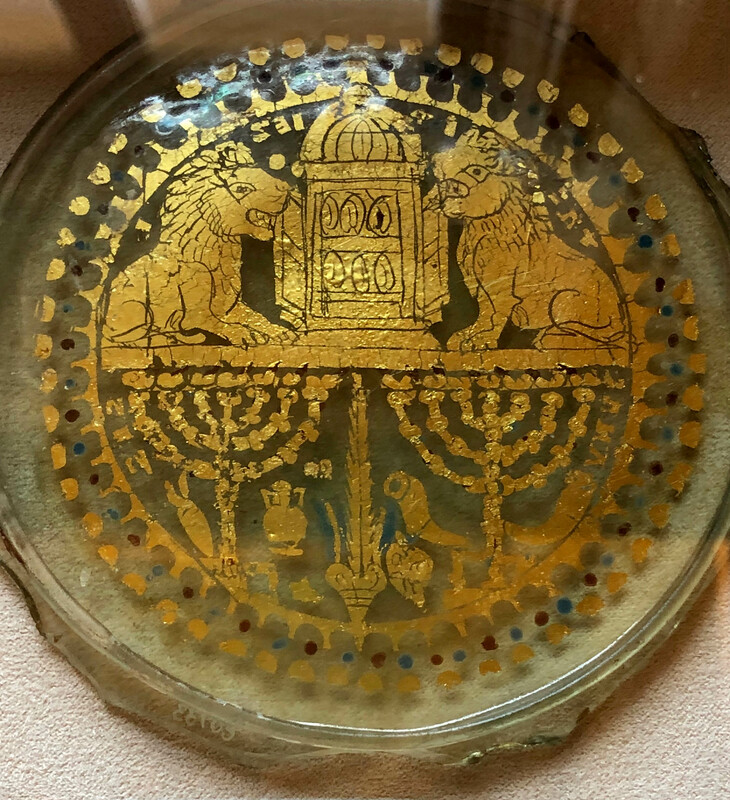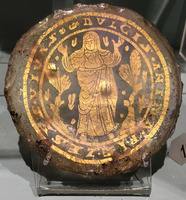Gold glass
Type:
Gold glass
Date:
Third and fourth centuries
Location or Findspot (Modern-Day Country):
Italy
Description:
In Late Antiquity, gold and silver leaf were cut and fused between two layers of round glass (vessel bottoms) to create decorative roundels. Many of the surviving gold-glass pieces were excavated from Roman catacombs, where they were used as decorative pieces and grave markers in burial niches. The scenes or symbols depicted are regularly religious (Greco-Roman, Christian, or Jewish) but there was also a long tradition of gold glass portraits, often produced as commemorative gifts. The Jewish examples here include the lions of Judah, menorahs, and Torah arks. Many gold-glass inscriptions are in the form of blessings, for example the piece with the standing female figure, which reads "dulcis anima pie zeses vivas" (Dear soul, drink, may you live, may you live). "Pie zeses" (drink, may you live) was a popular drinking toast.
Relevant Textbook Chapter(s):
1,
2
Repository and Online Resources:
• Visit the website of the Vatican Museums for more information on their gold glass collection.
Image Credits:
Linda Safran




